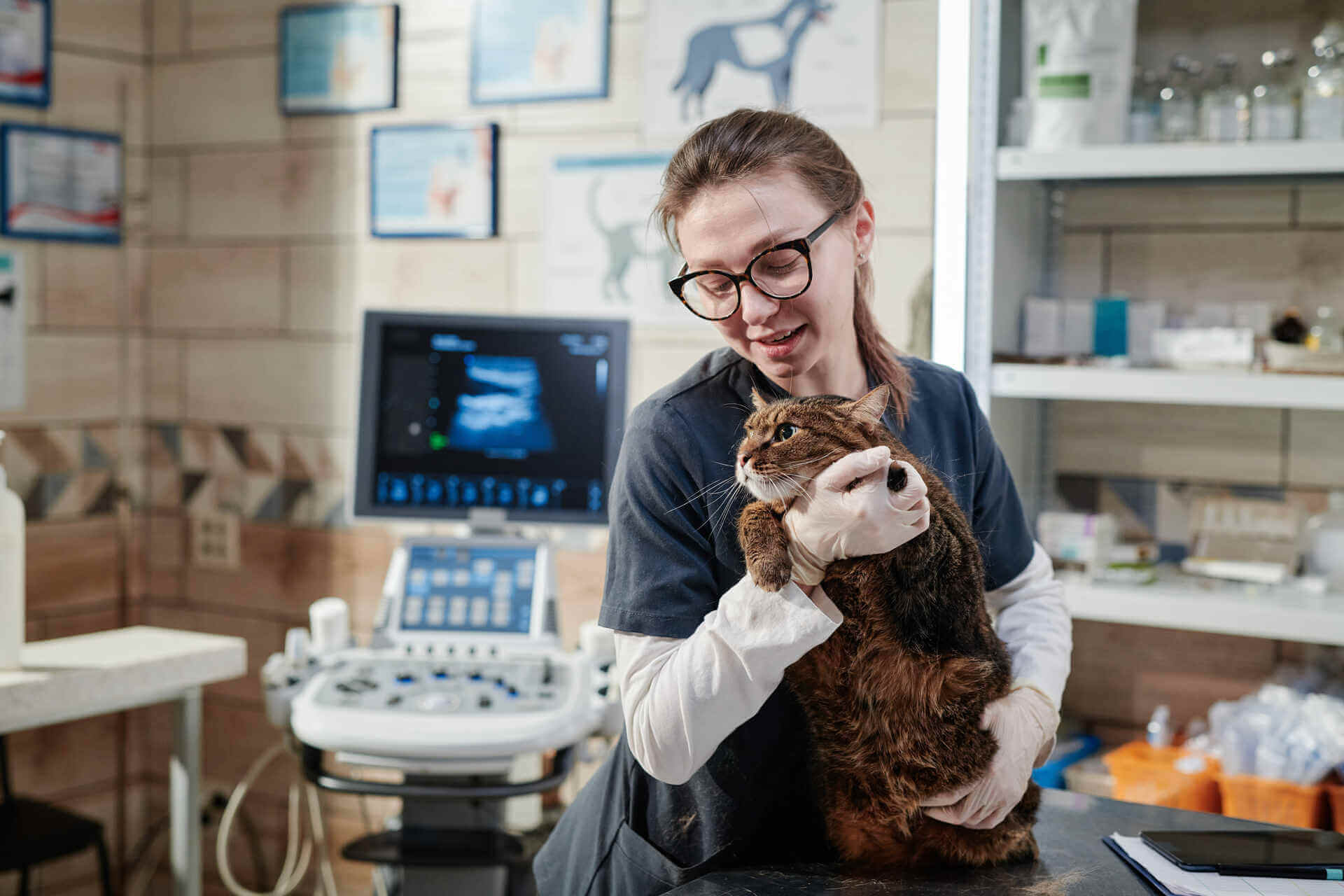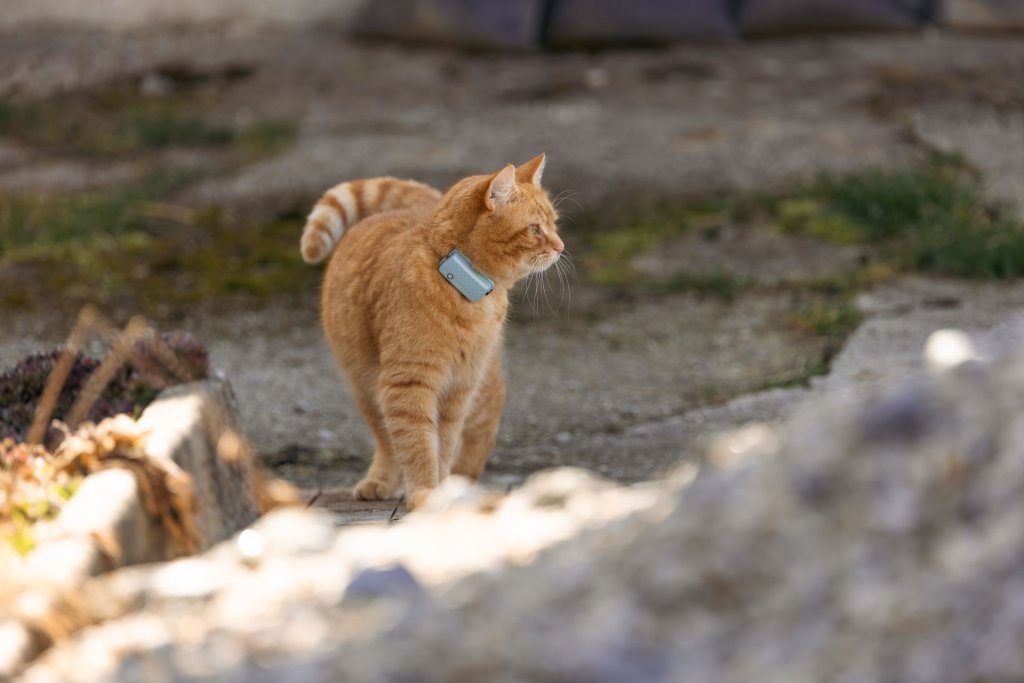What To Do With A Stray Cat: 5 Steps To Start With
If you've found a little fuzzball curled up under your car or at your doorstep, it's natural to want to step in & lend a hand. But what to do with a stray cat after? Start with these 5 steps to keep your new friend happy, healthy & safe.

Whether it’s a lost kitty wandering the streets or invading your yard, you wouldn’t be the first to wonder: what to do with a stray cat? Though it’s natural to want to step in and lend a hand, it’s not as easy as just “adopting” them out of nowhere. Follow these tips on what steps you can take if you’ve got a new feline friend that’s turned up out of the blue – and where a cat GPS tracker can be an important safety measure.

Find out where your cat spends their time.
Read more- Feral cat vs. stray cat: What’s the difference?
- 1) How to get a stray cat to come to you
- 2) What to do with a stray cat once they do come to you
- 3) Can I keep a stray cat? Or do I need to report them as found?
- 4) What can I feed a stray cat?
- 5) Can I take a stray cat to the vet for free?
- Want to prevent your cat from becoming a permanent stray?
Feral cat vs. stray cat: What’s the difference?
Step one if you’re wondering what to do with a stray cat: figure out if they’re a stray, after all! You might’ve heard terms like “feral” and “stray” used interchangeably. But turns out, feral cats are quite different from your regular stray.
| Stray cats are: | Feral cats are: |
| Usually lost or abandoned pets that used to belong to a family or household before | Typically born and raised in the wild |
| Are used to human contact and often seek it | Are NOT used to human contact and do not seek it |
| May be less likely to be fearful of people | May be fearful or aggressive towards humans |
| May live near humans | Usually live in colonies in the wild |
If you can figure out whether you’re dealing with a stray or feral cat, this can help you handle the situation that much better.
- If the cat is a stray, socializing and rehoming them could be a viable option.
- If it’s a feral cat, you might need to get in touch with a local animal organization with a Trap-Neuter-Return (TNR) program to manage their population and prevent further breeding.
1) How to get a stray cat to come to you
Building trust with a stray cat can take time, but it’s not impossible! If you’re trying to help, it’s best to approach the situation slowly and calmly. Here are some steps to help encourage a stray cat to approach you:
- Move slowly and avoid sudden gestures that might scare them off.
- Put out some food and stand at a distance to let the cat approach at its own pace.
- Use non-threatening body language. Sit or crouch down low to the ground to avoid looking intimidating. Try to stay quiet and let the cat feel in control of the situation.
- If you’re in a situation where you feel it’s necessary to bring the cat indoors, use a humane trap (available at most animal shelters) to avoid harming them.
- Provide shelter by leaving your shed or garage door open. Or set up a small box made of wood or other sturdy material, lined with straw or old blankets. The cat will approach when it’s comfortable enough.
Read more: How To DIY A Heated Cat House In Just 3 Steps
2) What to do with a stray cat once they do come to you
While taking in a stray cat can give you the fuzzies, it’s important to follow local laws when it comes to animal rescue. Some areas have strict regulations about rescuing and caring for stray animals. Certain jurisdictions may even require you to report found animals to animal control.
So first things first:
- Check for a collar or ID tags. Your “stray” might just be an outdoor cat owned by a family that’s probably out looking for them! Some cats might have a tattoo on the ear to identify them.
- Take the cat to your local vet’s office or shelter. In case your new friend has a microchip cat ID, the staff can scan them for one, find the owner’s contact details, and inform them.
- Notify local shelters or animal control: In many places, you’re required to report found animals. Some jurisdictions have a waiting period for owners to claim lost pets. Make sure to check your local laws to avoid any trouble down the line.
- Take a photo of the cat to share via social media. Make sure to share any posts publicly so you have a wider reach. Join a few “lost pet” groups in your vicinity so you’re more likely to reach the owner, if any.
- Check out any “lost pet” websites to share the cat’s photo, like for example Petco or Pawboost.
- Keep an eye out for any “missing cat” posters in your neighborhood. It could just be your stray’s owner.
If you choose to adopt the cat or care for them temporarily, you may be required to take steps like licensing, vaccinations, and neutering/spaying. Your local vet can best advise you how to get started.

3) Can I keep a stray cat? Or do I need to report them as found?
It depends on where you live. But in general, we’d always recommend you err on the side of caution. Get in touch with your local animal shelter, rescue organization, or animal control services to report your new stray. (Else, your state or country might have penalties for non-reporting!)
- In the US, stray cat reporting laws vary from state to state and even between municipalities. Some regions even have animal welfare laws that consider found strays as “property.” So you may be required to search for the owner.
- In Canada, reporting laws vary across provinces. Your local Humane Society can help you guide you through the reporting process. Like the US, some cities consider found cats “property.” Shelters are obliged to hold them for a specific time frame until the owner comes to pick them up.
- In the UK, the Animal Welfare Act of 2006 requires you to report a lost or stray animal if found. The RSPCA can help guide you through the process.
- In Ireland, you should contact your local animal shelter or rescue organization to report a found stray. The ISPCA can help guide you through the process.
- In Australia, most states, including New South Wales, Victoria, and Queensland include laws where stray cats must be reported to local councils or animal shelters.
- In New Zealand, found stray cats should be reported to local councils or the SPCA.
4) What can I feed a stray cat?
If you’re caring for a a stray cat, it’s important to know what’s safe for them to eat. And nope, a bowl of milk might not actually be the best choice. Most adult cats are lactose intolerant and milk can make them sick.
Instead, you could offer them:
- Canned cat food: Wet food is highly nutritious and easier for a stray cat to digest, especially if they’ve been on the streets for a while.
- Dry kibble: If you don’t have wet food on hand, dry kibble can also work in a pinch. Just keep in mind, it’s not as nutrient-dense as wet food.
- Plain cooked chicken or turkey: If you happen to have leftover cooked meat, make sure it’s unseasoned, without any garlic, onion, or bones. These are safe and tasty for cats.
- Avoid feeding raw meat, since this might also make them quite sick.
- Be careful not to overfeed. Too much food, especially for a cat that may be undernourished, can cause digestive issues.
5) Can I take a stray cat to the vet for free?
Taking a stray cat to the vet is important, especially if they appear sick or injured. But if you can’t afford the costs, the answer depends on where you live and the specific vet clinics or shelters available to you.
- In the US: Many local shelters and rescues offer discounted services for strays. Some organizations provide free vet care for cats in certain circumstances. Others might cover basic medical treatments, vaccinations, or spaying/neutering.
- In the UK: The RSPCA and local animal charities can sometimes offer free or subsidized treatment for stray and feral cats. Some vets will treat strays for free or at a reduced rate if you explain the situation, especially if the cat’s health is at risk.
- In other countries: There are often similar charitable programs available to assist with stray and feral cats. If you’re unsure, contact local animal shelters or rescues to find out if you have any options in financial assistance when it comes to vet visits.
Want to prevent your cat from becoming a permanent stray?
Many people adopt stray cats or bring them indoors temporarily. But if you’re wondering what to do with a stray cat that’s used to roaming outdoors, a cat GPS tracker can be an important safety measure.
Because in a nutshell:
A GPS tracker can help prevent lost or missing cats from becoming permanent strays.

With a Tractive GPS strapped to your new buddy’s collar, you can monitor where your cat is off wandering:
- In real-time,
- Over an unlimited range,
- Over a Heat Map of spots where they spend most of their time,
- And even across the territory they establish
💡So you can prevent your cat from wandering too far and getting their paws into something dangerous…or ending up as a stray again. (Especially if they’re a former outdoor cat that’s used to prowling about outside by themselves.)

“I recently got a Tractive tracker for my cat as I was convinced he’d made a friend who was feeding him in their house, and was worried they might think he was a stray.
Now I can see what he’s up to I know this isn’t the case, he goes out for the day and travels an impressive distance, and has the same routine every day. I’ve really enjoyed the peace of mind.“
– Harriet Donegan, GB (Source: Trustpilot)

Know everywhere your cat goes
See where they are in real-time, no matter how far they go. Get alerts if they roam too far from home. Find out where they’ve been and discover their favorite spots. Let others track with you. Track sleep and activity.
Trying to entice a stray cat with food but not having much luck? Here’s the heartwarming story of one Michigan-based cat parent who took almost a year to bring in Cinnabon the cat to a loving forever home!
And if you’ve liked this post, share it with a friend or a loved one – and let’s help build a safer, kinder world for our furry friends together. Happy rescuing!




